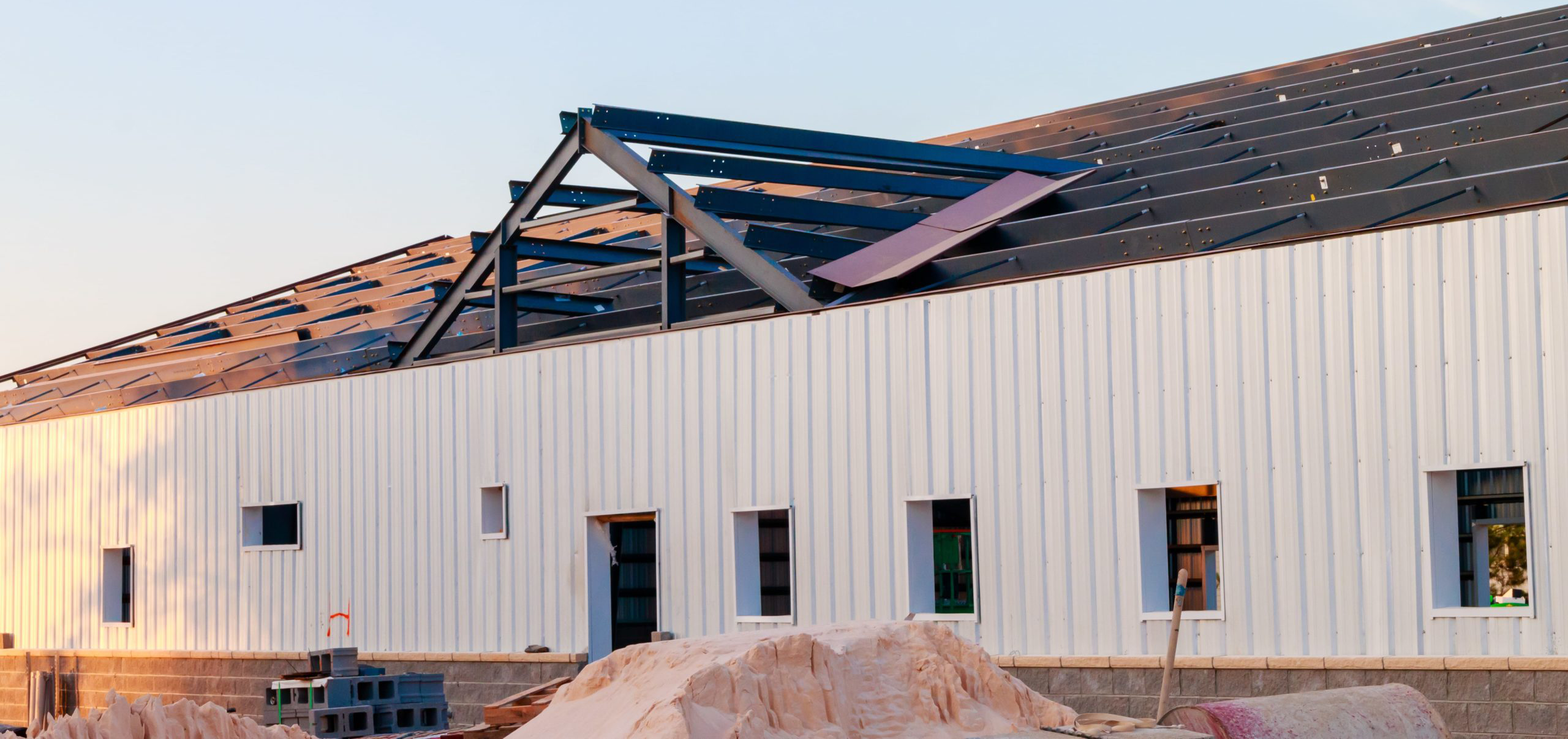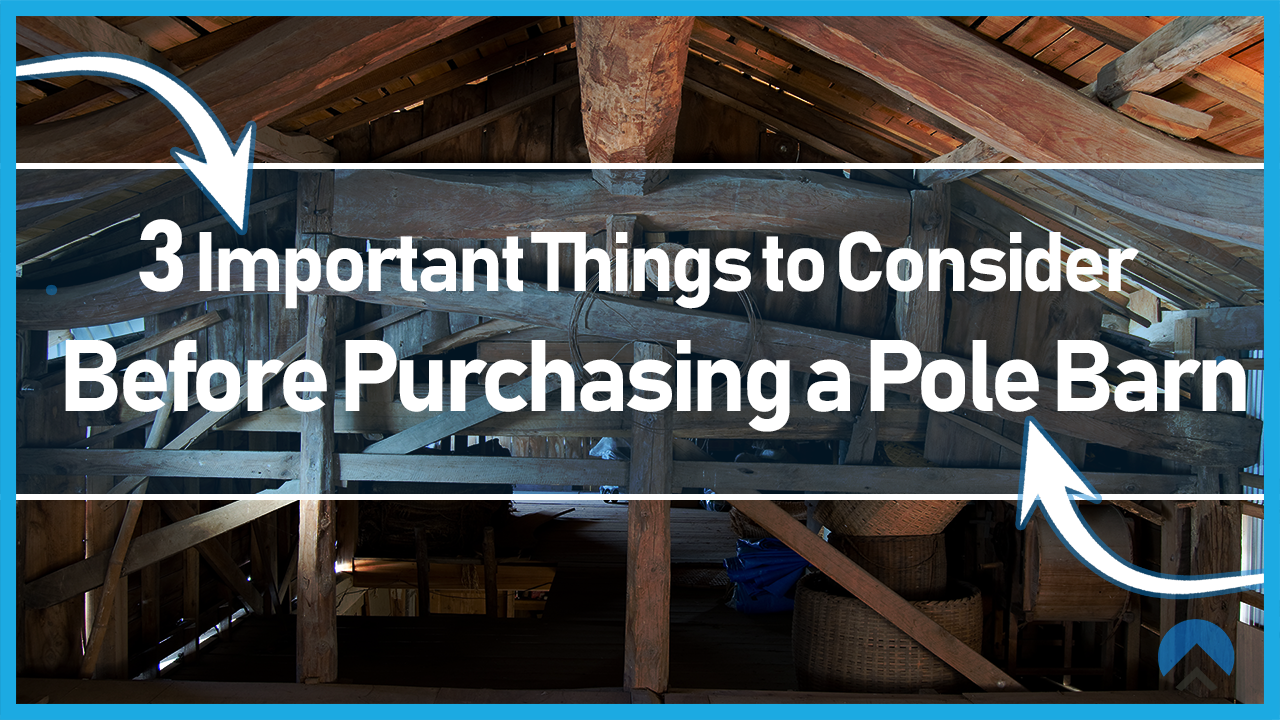We are sometimes asked whether a steel structure or a wood-framed pole barn is the better building system for our customer’s project. The answer, for durability and strength, is evident from where we sit. However, there may be benefits to choosing a pole barn over a steel structure when it comes to time, price, or utility. Still, we feel it is important to point out aspects of pole barns a consumer should consider before purchasing one.
A Brief Origin Story:
Pole barns have been a hallmark of America’s rural landscape for the better part of 90 years. Post and beam construction has existed for centuries and was a staple of Colonial America. The building of pole barns got its start in the 1930s and has its roots in the economic impacts of the Dust Bowl and the Great Depression. Pole barns were constructed from old telephone poles, which were available and affordable, earning them the name, “telephone pole barns.”
Even after the economy recovered, generations of farmers and ranchers continue to use pole barns to store livestock, equipment, and feed. Some are unaware of more durable and cost-effective options because, “if it ain’t broke, don’t fix it.” Right?
Despite the many advancements in the materials and design of pole barns, they are still handicapped by the same structural issues they have always suffered from.
3 Important Things to Consider Before Purchasing a Pole Barn
- Safety:
- Preserving your investment is key to the success of any farm or ranch, so investing in the safety and durability of your assets protects you and yours.
- Wood frame buildings, like pole barns, aren’t as fire resistant as steel buildings. Steel is noncombustible and cannot add fuel to the fire. However, wood framing is easily ignited and fuels any existing structural fire. According to the National Fire Protection Association, from 2006 to 2010, there were 830 structure fires in farming buildings (properties defined in NFIRS as: livestock or poultry storage, including barns, stockyards, and animal pens) reported to U.S. municipal fire departments per year, resulting in $28 million of direct property damage.
- Next, pole barns are usually not recommended for livestock, because there is a risk of toxic and unsanitary conditions due to the materials used and the style of construction. Pole barns have truss-type rafters which take up building space and create the ideal place for birds to roost, nest, and spread their droppings onto your livestock, increasing the chances of spreading Avian flu. Remember that some strains of the virus can affect mammals, such as pigs, cats, horses, and dogs, not just Poultry.
- Environmental Impacts
- Wood construction isn’t a sustainable resource by any measure. According to the Census Bureau, the average American home built in 2013 was 2,600 square feet, and it would have required 16,380 board feet to build! Consider a mature pine with a merchantable height of 80’ and a diameter of 2’. Using the method detailed above, you will find that its lumber yield is about 3,015 of board feet. If it takes 16,380 board feet to build the average home, this would mean it takes almost five mature pines to fill that demand. On the other hand, steel buildings are made from 100% recycled and reclaimed steel.
- Cheaper is usually more expensive.
- Pole barns may be cheaper to build, but the average steel frame barn is still usually 60% less than traditional construction. Unlike Pole Barns though, steel buildings are built to last—most steel manufacturers offer a 25-year warranty—and end up being cheaper once you factor in long-term costs. Steel buildings often see insurance savings over wood structures by as much as 30%. The savings do not stop there: Unlike steel buildings, which sit on a concrete foundation, pole barns use wooden poles which are buried deep in the ground. Wooden poles will shift and eventually decay. Because of foundation poles shifting and rotting, they must be replaced every five to seven years; an expensive and time-consuming process.
- A pole barn is not considered a permanent structure. Some building departments classify pole barns as an accessory structures- meaning, a structure having a minimum value and utility. i.e., parking, storage, and other uninhabitable uses, such as garages, carports, storage sheds, hay sheds, and the like. Nothing is more permanent than 100% American made Steel.
Conclusion:
- Pole barns are neither as safe, nor as environmentally friendly as a steel building, and once you factor in long term costs usually end up costing more. We understand and appreciate how and where pole barns may be used over a steel structure but want our customers to understand the risks involved in owning one.
For more information on Steel Buildings, CLICK HERE or give us a call 888-783-3535
You can also reach us @coastalsteel
And, don’t forget to subscribe, share, and comment!


